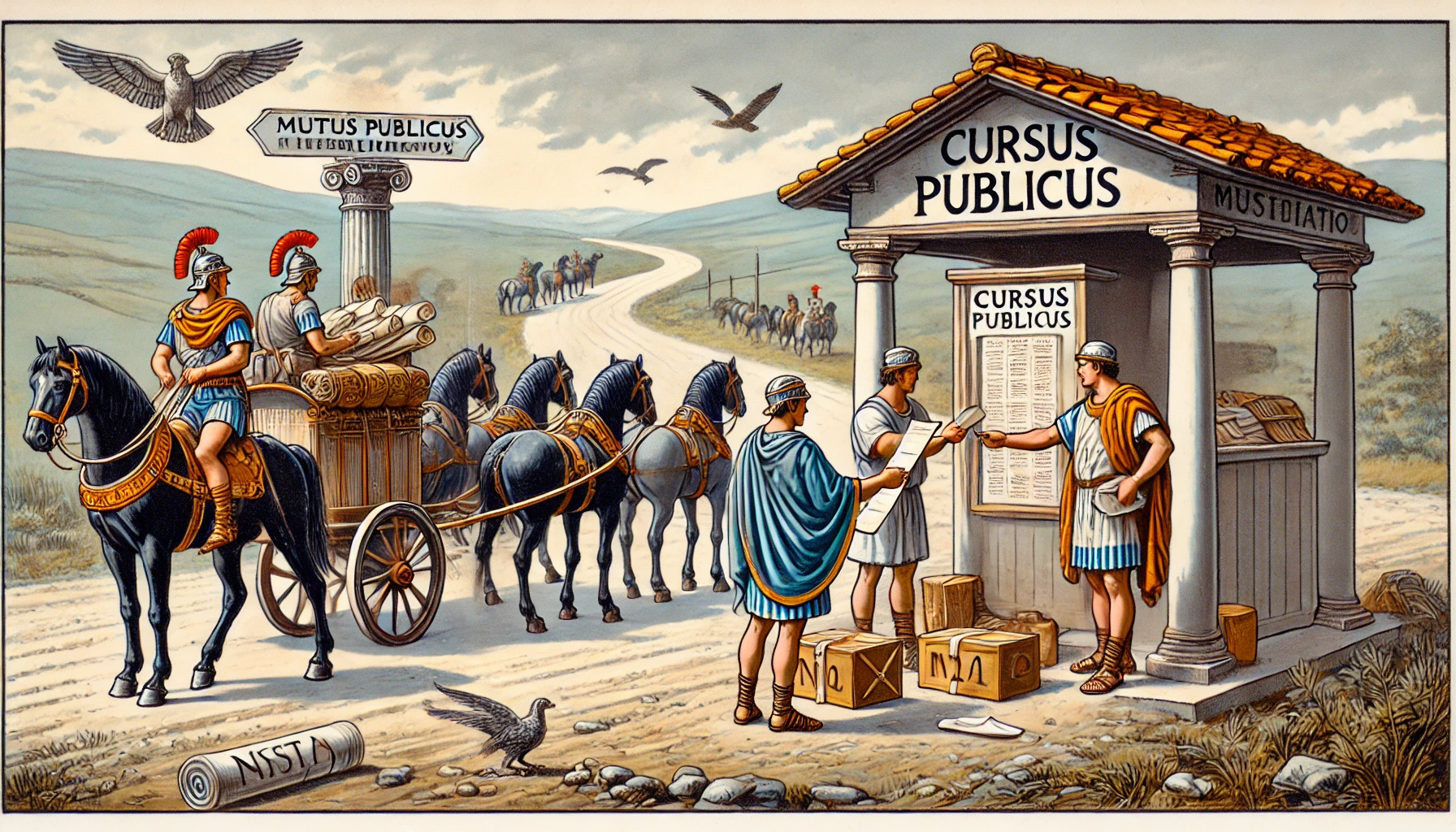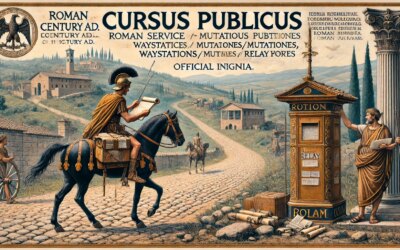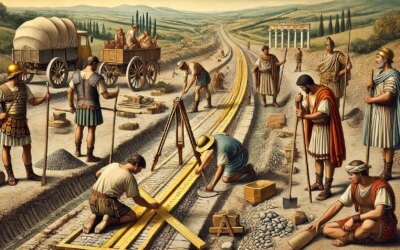Letters, Roads, and the Pulse of Power
At the height of the Roman Empire, a letter could travel from the heart of Rome to the furthest provinces faster than most citizens moved in their entire lives. This was the Cursus Publicus, the Roman state postal system—a vast, coordinated network of riders, relay stations, and roadways that bound the empire with unprecedented efficiency. In the 1st century AD, it became one of Rome’s most extraordinary logistical achievements, sustaining the administrative heartbeat of an empire that stretched from Britannia to Syria.
The Origins of the Cursus Publicus
The Cursus Publicus was formalized under Augustus, who recognized that military conquests and provincial governance required fast, reliable communication. While earlier systems had existed for ad hoc military or senatorial needs, Augustus institutionalized it as a public service—albeit one reserved for official use.
Inspired in part by Persian and Hellenistic models, the Roman system relied on a network of post houses (stationes) and horse-change stations (mutationes) spaced along major roads. These were supported by the viae publicae, the empire’s famed roads, and staffed by a cadre of couriers, stable hands, and administrators.
How It Worked
The system was designed for speed and reliability:
- Messages and parcels were transported by mounted couriers (tabellarii), who would change horses at mutationes approximately every 12 to 15 miles.
- Relay stations included accommodations, fresh mounts, fodder, and scribes for documentation.
- Official passes called diplomata were required to use the system. Issued by the emperor or high-ranking officials, they granted access to stations and resources.
- Priority traffic included imperial decrees, military dispatches, financial reports, and high-priority correspondence from governors and legates.
The Cursus Publicus was not a public mailing service. Private citizens could not use it without special permission, though bribery and influence sometimes bent the rules.
Infrastructure: The Backbone of Communication
The brilliance of the system lay in its infrastructure. The Romans built over 400,000 kilometers of roads, of which around 80,000 were paved. Along these roads, milestones indicated distances and repair records. Inns (mansiones) provided rest for couriers on longer routes.
Imperial road maps like the Tabula Peutingeriana charted the web of stations and routes, offering a glimpse into the bureaucratic mind of Roman governance.
The Men Behind the Messages
Couriers, or cursores, were often drawn from the military or trained servants. They were expected to be swift, discreet, and disciplined. Letters were sealed and could be coded, especially during times of conflict or political unrest. The use of double scrolls and wax seals ensured confidentiality.
Supervision of the Cursus Publicus fell to the praefectus vehiculorum or later the praefectus praetorio under imperial reform, showing how important the system was to statecraft.
Speed and Reach
Under ideal conditions, a message could travel up to 80-100 kilometers per day. News of a rebellion, the death of an emperor, or a military defeat could thus reach Rome in days rather than weeks—a crucial advantage in managing such a vast territory.
For example, messages from Gaul could reach the capital in under a week. Dispatches from Africa or Egypt required maritime transport but were still faster than any civilian alternative.
Economic and Strategic Importance
The Cursus Publicus was not cheap. The state bore the cost of maintaining stations, feeding animals, and paying staff. It also strained provincial economies, which were often required to supply horses, fodder, and facilities—one reason why local governors sometimes resisted its expansion.
Nonetheless, the benefits were immense. It enabled Rome to collect taxes, enforce laws, and coordinate military responses across continents. It was, in effect, Rome’s digital network in an analog age.
Legacy and Decline
Even after the fall of the Western Empire in the 5th century AD, echoes of the Cursus Publicus remained. The Byzantine Empire maintained a similar system, and medieval kingdoms borrowed its principles. The idea of a central courier service directly influenced the development of national postal systems in Renaissance Europe.
Archaeological remnants of stations, milestones, and diplomata documents give us rare insights into its day-to-day operation. They remind us that the empire’s strength rested not just on legions—but on logistics.
The Network That Bound the World
The Cursus Publicus was one of Rome’s most enduring administrative achievements. In an empire built on conquest, it was communication that truly held the provinces together. With every galloping hoofbeat, with every wax-sealed scroll, Rome whispered across the world, asserting its order, its presence, and its claim to eternity.






